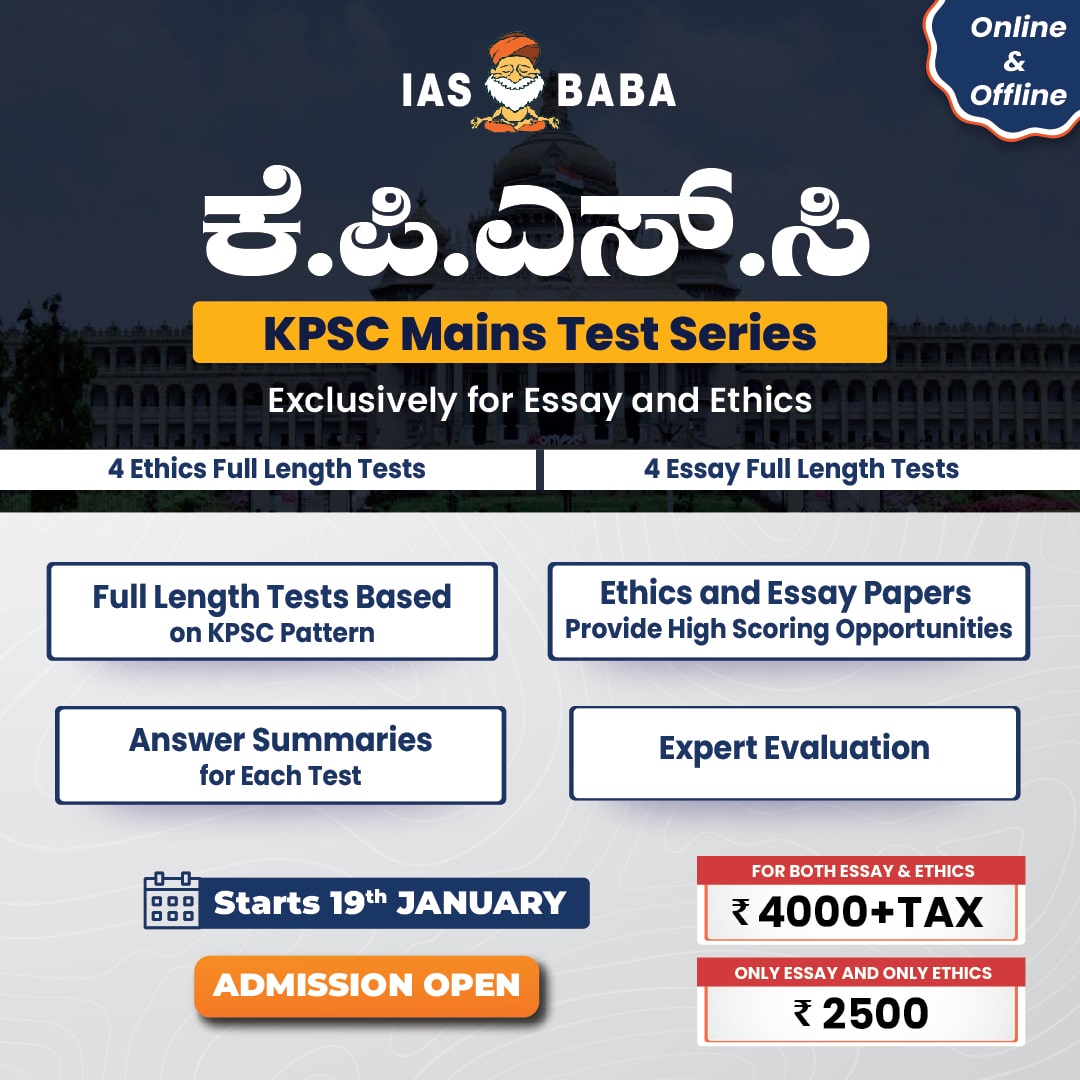IASbaba's Daily Current Affairs Analysis, International, National, UPSC
Archives
IASbaba’s Daily Current Affairs- 29th June, 2015
NATIONAL
Is Second Green Revoultion Needed?
- In the recent times there has been a major thrust for another Green Revolution and special focus would be on Eastern States likeUttar Pradesh, Bihar, West Bengal, Jharkhand, Assam, Odhisa.
Modernising the agriculture sector
- For this to happen ‘Modernising’ the agriculture sector and making it more productive is the key. Henceforth, emphasis should be-
- On the need for scientific methods for farming to increase productivity like Research in the field of agriculture to determine the health of soil, quality of seeds, water quantity, amount of fertilizers etc.
- Training youth in soil testing, this would also lead to job creation.
- Water conservation techniques like micro-irrigation, drip irrigation, water-shed management etc.
Other Measures:
- Recently, the Government of India (GOI) has set-up Indian Agriculture Research Institute (IARI) in Jharkhand, which would achieve inclusive agricultural growth through Integrated Farming Systems (IFS) in the region. The institute will attract the cream of post-graduate and doctoral students from all over India and abroad to conduct region-specific research
- Focus on Pulses production and high-value crops, like Chawla’s baby corn, certain village can be dedicated to sowing lentils and oilseeds.
- A long and inefficient supply chain means that the average farmer receives less than a fifth of the price the consumer pays, as per the World Bank study report. Hence, steps to increase the efficiency of the supply chain and market linkages should be looked into.
Background:
What do you understand by the term ‘Green revolution’?
The term “Green Revolution” basically applies to successful agricultural experiments in many Third World countries. It was first introduced in India during period from 1967 to 1978 to achieve food self-sufficiency.
There were three basic elements in the method of the Green Revolution –
- expansion of cultivable areas
- two-crop seasons per year instead of one-crop season per year
- using High-yielding variety (HYV) seeds – rice , wheat (especially K68 variety) and also millet and corn; increased use of irrigation, pesticides and fertilizers.
Connecting the dots:
- Trace the initial development of agriculture in India with emphasis on launch of Green Revolution.
- Do you think Green Revolution actually brought the revolution, it was meant for?
- What were the impacts of first Green Revolution on Indian agriculture?
- Look for other initiatives like Blue Revolution, Pink Revolution etc and prepare a short analysis and impact of them.
NGO’s foreign funds and a trust deficit
- Recently, the provision of Foreign Contributions Regulation Act has been used to cut funding for some of the NGOs. Some provisions of the FCRA act regulate the foreign funding to NGOs. The government has also rightly cancelled licenses of 9000 NGOs as they haven’t submitted their accounts.
Why Government did this?
- The reasons given by the government is that the funding is detrimental to the national interest, economic, strategic interest or likely to affect public interest in general.
Is there any discrimination only against foreign funding to NGO?
Views of IASbaba and Analysis
- If we look at the ground realities and facts, the picture is a bit shady. There are a total of 22,702 NGOs registered to receive foreign funding. In 2011-12 the total funding received was Rs11, 546 Crore of which only 6% was used for religious activities and another 6% for lobbying, advocacy, awareness generation etc which is negligible. There is discrimination only against foreign funds and what if domestic funds are used for the same purposes?
- Secondly, the government receives funds from agencies like World Bank, UN etc which are not allowed to contribute through FCRA. In 2013-14 the World Bank Group itself contributed Rs 3.22 lakh crore towards India. Next is the FDI which India receives which was to the tune of 1.76lakh crore in 2014-15.
- Thirdly, the Supreme Court noted that there were few political parties receiving foreign funds which are otherwise barred from receiving foreign funds but no action was taken on them.
- Fourthly, the political parties themselves were not compliant to the orders of CIC on disclosure norms.
- As seen above there is undue discrimination against some foreign funded NGOs which are spending major portions of their funds in education, health, rural development etc. Organization like Green Peace was unequivocally raising its voice against unsustainable development activities critically affecting environment and local people. But they were banned.
- Also unlike in the western democracies there is a clamp down on certain NGOs. Are we moving towards a free market economy with totalitarian controls like in few communist countries is the question.
- All agencies including the NGOs need to be accountable to the law of the land and in punishing a few for wrong doing, the ones abiding by the law must not be penalized. The main issue to be addressed is the trust deficit between the govt and the civil society organizations whose definitions of development may vary.
Connecting the dots:
- Discuss the role of NGO’s in healthy development of democratic country like India.
- India will not reach to the levels of developed nations if a proper balance is not maintained between Government and NGO’s. Do you agree?
- Suppose you are a District Administrator of an area where an NGO is doing great ground work for the development of rural health and education sector. Some high political class people foul played against the NGO and government planned to ban it. You were informed about the same but being the administrator of the area, you know about their honest work for the local populace. How will you handle this and stop the conspiracy against the NGO?
One Rank One Pension (OROP): exclusivity key to preventing legal resources
- The retired personnel from Central Armed Police forces (CAPF) and Central Para Military Forces (CPMF) have raised the demand for One Rank One Pension (OROP) in line with the plans for Ex-servicemen.
- To prevent legal challenges in future, the Defence Ministry has stated that OROP would be made exclusive for Service personnel by classifying it as “military pension.”
- The essential criterion is to clearly define it as different from civilian pension.
What is OROP?
- One Rank, One Pension(OROP), or same pension, for same rank, for same length of service, irrespective of the date of retirement.
- Example, a soldier who has retired in 2010 would get the same amount of pension as the one (soldier) who has retired in 2014.
INTERNATIONAL
Bridging ties with the New Silk Road
- The Maritime Silk Road, officially the 21st Century Maritime Silk Route Economic belt is a Chinese strategic initiative to increase investments and foster collaboration across the historic Silk Road. China–Pakistan Economic Corridor is an extension to proposed Silk Road.
- The Belt and the Road project is an ambitious exercise that was announced by
the Chinese President Xi Jinping-led regime in 2013. It encompasses trade and investment hubs to the north of China by reaching out to Eurasia including a link via Myanmar to India (the New Silk Road Economic Belt). - The other component, the Maritime Silk Road begins from the south of the land mass via the South China Sea, then going on towards Indo-China, south-East Asia and then traversing around the Indian Ocean by reaching out to Africa and Europe.
What is driving China for these initiatives?
- It is more of an economic imperative for China to promote the New Silk Road Economic Belt and the Road. The Chinese economy is undergoing a structural change, from one that was export and investment-led, labour intensive and manufacturing driven to a more diversified, industrially transformed, internal consumption driven, economic one.
Indian response
- The response from the Indian government to its participation in the Belt and the Road projects (the latter especially) has been lukewarm, even though India has become a founding member of the AIIB along with China.
- While the Maritime Silk Road would be a way to build a route for the rerouting/export of Chinese capital and consumer goods, the Silk Road Belt will be a channel for land-based projects like building pipelines, and infrastructure such as roads and rail-lines with partnering countries along the routes.
- China visualises synergy with the Indian Act East initiative and the development of the Bangladesh-China-India-Myanmar (BCIM) corridor.
- India’s participation in the Silk Road project will increase Chinese investment in infrastructure projects in India and ease the massive trade deficit.
Strategic dilemma
- Some experts consider the Maritime Silk Road as a way of establishing a “String of Pearls” — strategic bases encircling India — and constituting a challenge of a geopolitical kind.
- This view does not consider the fact that India’s neighbours, Sri Lanka, Pakistan and even Nepal have largely and willingly wanted to partner with China in projects related to port and infrastructure development in the form of rail links among others.
Way forward:
- There are avenues that can be explored to leverage India’s advantages in the tertiary sector and China’s strengths in capital investment for what could be a “win-win” deal. Therefore, a more open assessment of the Belt and the Road initiative in this regard would be a step in the right direction.
Connecting the dots:
- UPSC had asked a question on China-Pak Economic Corridor in 2014 Mains. Prepare the developmental aspects of the same
- Mention the advantages and disadvantages of China-Pak Corridor for India.
- What are the similarities and differences between String of Pearl and New Maritime Silk Route?
- Is it a threat for India? On contrary how India can take advantage from the same?














